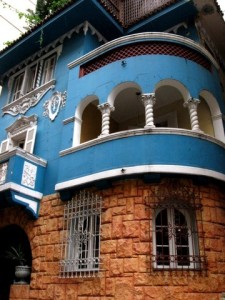
Photo © Michael Sommers.
This week, The New York Times’ Practical Traveler section published a timely piece entitled “How to Stretch Your Dollar in South America”. After praising how “hot” South America has become as a travel destination and how inexpensive it is compared to Europe, author Susan Stellin backtracked somewhat by stating that some countries – specifically Argentina and Brazil– are not quite as bargain basement as some might think.
I’ll let my Moon.com colleague Wayne Bernhardson comment on prices down Argentine way, but in terms of Brazil, Stellin makes a valid point; a booming local economy coupled with a strong Brazilian real and a weak U.S. dollar means that Brazil is not the cheap destination it was as recently as 5 years ago.
Stellin proceeds to corral a group of South American travel experts to offer up tips on how to travel inexpensively south of the Equator. Although some are good, i.e. renting an apartment in Rio de Janeiro with services such as Apartmentsrio.com and rentflat.com.br, others range from obvious – “take a group tour” in order to cut down on expenses – to puzzling – substitute a mega-city like Rio for a smaller city (at the other end of the country) such as Recife. (While Recife may be incrementally cheaper than Rio, it’s certainly no substitute for someone who has his/her heart set on getting to know the Cidade Maravilhosa).
The article got me thinking: had I been asked to contribute my two cents, what would I have told Ms. Stellin? In response, I came up with the following 5 tips for stretching your dollar in Brazil:
1. Check out (and into) Hostels
Throughout Brazil, a new generation of albergues de juventude has cropped up and they’re hardly the barracks-like backpacker pit stops that they used to be. In fact, they’re often located in converted houses and sport mod cons (Wi-Fi, fully equipped kitchens that allow you to cook) as well as friendly hang-out spaces such as rooftop sun decks and gardens with hammocks. Many even have decorative schemes! Although you may not want to rough it in a dorm room, the vast majority usually have at least one or two (nicely furnished) double rooms at excellent prices. Although you’ll find them on secluded beaches as well as in big cities, they really come in handy in cities such as Rio where hotel prices tend to be inflated. In recent times, a handful of really attractive hostels have opened up in Rio (such as Copacabana’s Stone of a Beach, pictured above) – even swanky Leblon now has one!
2. Take to the Skies
In Brazil, buses are cheap for short hauls, but once you get into long hauls (over 8 hours), flying can often be a better deal (not to mention much faster) – provided you book in advance. Brazil has a handful of national airlines and charters that have driven the price of flying down considerably. Of course, the best deals are on high traffic routes, i.e. anything departing from São Paulo and Rio. All airlines set aside a number of seats that are priced at different rates; the best are scooped up pretty early (i.e. several weeks in advance). Very early morning “madrugada” flights are also a bargain.
3. Go with the Low
Travel outside of Brazil’s high season (mid-December through Carnaval and July to mid-August) to take advantage of major discounts (of up to 50 percent) in terms of accommodation and, to a lesser extent, domestic airfares.
4. Always Negotiate a Discount
If you’re staying at a hotel or a pousada (guest house) for more than one night, you can also usually negotiate further discounts of between 5 and 10 percent based on the length of time you’re staying (and your willingness to pay in cash).
5. Eat Alternatively
To keep food costs down (and taste buds challenged), there are various options aside from your classic restaurant.